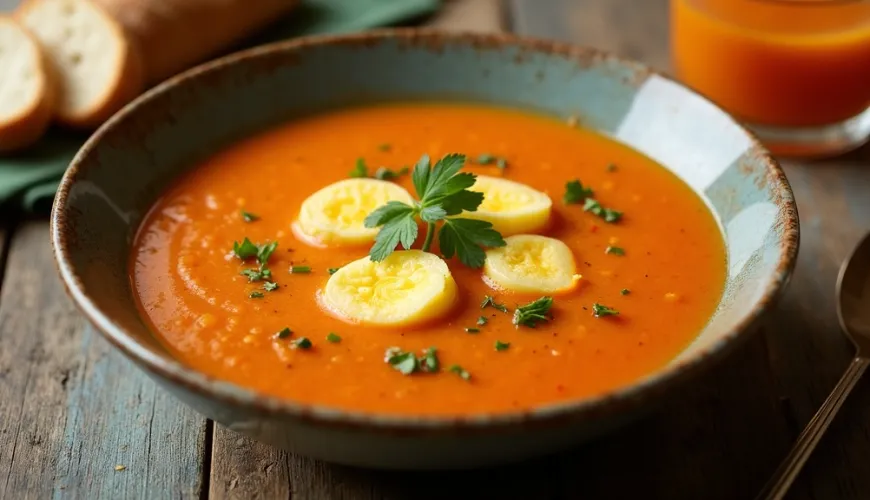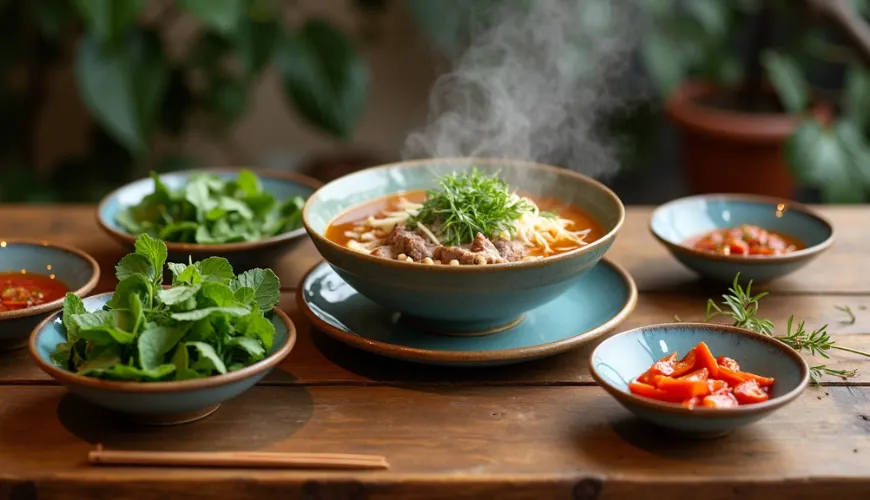
Soup dumplings as a family heirloom you'll fall in love with

Traditional Soup Dumpling - The Return of a Forgotten Classic
The aroma of a hearty broth, slowly simmering vegetables, and most importantly, something that doesn’t dissolve in the bowl like noodles, but still adds fullness and flavor to the soup. Egg dumpling for soup is one of those humble yet unmistakable treasures of Czech cuisine that deserves a comeback to our tables. Perhaps you remember it from childhood when your grandmother would take it out of the oven and cut it into strips or cubes. And perhaps you've completely forgotten about it. What’s its story, and why should it be part of our meals again?
What Exactly is a Soup Dumpling?
A dumpling is a simple, usually egg or semolina flatbread, baked in the oven, allowed to cool, and then cut into small strips or cubes. These are added to hot soup – most commonly to broth. Egg dumpling for soup is particularly known for being made from eggs, milk, flour, and herbs, sometimes with the addition of breadcrumbs or cheese. Semolina dumpling for soup uses the familiar wheat semolina, giving it a slightly different structure, softer and fluffier.
This simple side dish has a long tradition and offered a way to feed the whole family without the need for expensive meat. Today, as more people return to home cooking and simple ingredients, oven-baked soup dumplings are experiencing a small revival.
Why Fall in Love with It Again?
It might sound like an ordinary detail, but a homemade soup dumpling has several advantages. Firstly, it’s a way to add something more to the soup – not just flavor, but also texture and nutritional value. It’s a good way to use up leftovers of eggs, milk, or herbs that might otherwise go to waste. And most importantly, the preparation is easier than it seems. No special tools needed – just an oven, a baking sheet, and a few basic ingredients.
Children often reject vegetable broths or "clear" soups, but when egg dumpling is added, it disappears from the plate in a flash. Perhaps it’s because its mild taste resembles a pancake, or because it sits well on a spoon. And for adults? They appreciate its versatility. It goes well with meat broth, vegetable soup, and strong chicken consommé. It can also be prepared in vegetarian or gluten-free variations.
A Family Treasure - Dumpling as a Heirloom
One example of how firmly the dumpling is rooted in Czech cuisine is the story of Mrs. Marie from Pardubice. Her family has prided themselves on Sunday chicken broth for generations. When once asked why she adds dumpling to the soup, she simply replied: “Without it, it wouldn't be broth, just water with carrots." Her recipe is simple: three eggs, a bit of semolina, a pinch of salt, and marjoram. Mix everything, pour onto a greased baking sheet, and bake until golden. The cooled dumpling is then sliced into thin strips and added just before serving. “My grandchildren love it. And I'm glad they enjoy something we ate back in the First Republic."
Egg or Semolina? Or Perhaps Herbal?
The basic form of the light egg dumpling has evolved over time. Initially, it was purely an egg base with flour, later breadcrumbs were added, and eventually semolina. Semolina dumpling for soup is popular today for its tender consistency, but also for its greater fullness. Besides this, fresh herbs are often added to the batter – most commonly parsley, chives, or marjoram. They not only add color but also an aroma that gives the broth an additional dimension.
There are also less traditional variants – for example, cheese dumpling, which includes grated parmesan or edam, or whole-grain flour dumpling. Some modern cookbooks even recommend adding a bit of garlic or grated vegetables – like carrots or celery. The possibilities are endless.
How to Easily Prepare an Egg Dumpling at Home?
The most sought-after recipe of recent years? Egg dumpling for soup – oven recipe. And it’s no wonder. Baking in the oven ensures an even structure and a nicely golden color. Here’s a simple method that anyone can manage:
Ingredients:
- 3 eggs
- 3 tablespoons of coarse flour or semolina
- 100 ml milk
- A pinch of salt
- Chopped herbs to taste (parsley, chives, marjoram)
- Butter for greasing the baking sheet
Method:
- Beat the eggs with salt, add flour and milk, and mix well.
- Stir in the chopped herbs.
- Grease the baking sheet with butter or line it with baking paper.
- Pour the mixture onto the sheet and bake at 180 °C for about 15–20 minutes until the edges turn golden.
- Let it cool and cut into strips or cubes.
- Add to hot soup just before serving.
The result? A fragrant, light, and tasty addition to any soup. And perhaps even more importantly – without unnecessary waste and from natural ingredients that we mostly have at home.
Traditional Flavors in a Modern Kitchen
Even though it might seem that dumplings for soup belong in old cookbooks, their charm lies precisely in their simplicity and versatility. At a time when more and more people are trying to avoid convenience foods and are looking for ways to cook healthily, sustainably, and yet deliciously, this humble side dish surprisingly holds a strong place.
Many people today are rediscovering the charm of homemade broths, fermented foods, and baking from simple ingredients. And the soup dumpling fits perfectly into this trend. Moreover – it’s cheap, quick, and incredibly versatile. It suits not only beef broth but also vegetable stocks, creamy soups, or as an accompaniment to a lighter lunch.
“There’s nothing more wasteful in the kitchen than a complicated recipe," says chef Milan Hořejší, who serves homemade broth with dumplings in his restaurant in Brno. “Just three ingredients and love for what you do. And the dumpling is proof of that."
Who would have thought that an inconspicuous slice of baked dough could carry so many memories, flavors, and traditions? Perhaps that’s where its strength lies – reminding us that in simplicity there is not only beauty but often the greatest taste.

